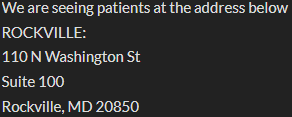What Is PRP Therapy and Can It Help with My Hair Loss?
PRP for Hair Loss
Living with hair that is rapidly thinning can be a cause for alarm. And if you come from a family who passes around hereditary “male-pattern” baldness, also known as androgenic alopecia, you may be doubly stressed when you look in the mirror or run a comb through your hair. Plus, hair loss can negatively impact your confidence and self-esteem.
Fortunately, there are options for those who wish to regain the full head of hair they once had. An innovative treatment called platelet-rich plasma (PRP) therapy can help to activate, Strengthen, and restore the hair follicles in the scalp, allowing them to function more capably and allow for renewed hair growth.
What Is PRP?
Blood has four main components: plasma, red blood cells, white blood cells, and platelets. Plasma is the liquid portion of the blood and plays a crucial role in carrying the blood components throughout the body. Platelets are blood cells that help with blood clotting. They are also a natural source of growth factors, substances that are involved in wound healing and regenerative processes.
Platelet-rich blood plasma is derived from a patient’s own blood plasma, which is prepared and processed to increase the concentration of platelets and growth factors to five times that normally found in the blood.
What Is the PRP Process?
PRP begins with one simple step—drawing blood from the patient’s arm. The blood is then placed into a centrifuge, a machine that spins the blood until the plasma is separated from the red blood cells.
The concentrated plasma, which is now rich in platelets and growth factors, is then injected into the patient’s scalp at the level of the hair follicles. This process is meticulous and requires injections with tiny needles targeting the follicular regions. Though the process is multifaceted, the whole thing start-to-finish usually takes no more than an hour.
Who Is a Good Candidate for PRP?
Men and women that are suffering from hair loss are ideal candidates for a PRP treatment. PRP can work great for people who have androgenic alopecia. Patients who have what professionals call areas of “weak quality” hair growth on their scalp, where there are still functioning hair follicles, and patients with small balding areas tend to respond quite well to PRP treatment. It has been found that people who suffer from early hair loss can tend to see very good results.
PRP therapy is also a wise and appropriate choice for people who wish to avoid more invasive treatments like hair transplantation surgery. And, patients who don’t want to use or don’t respond well to hair growth topicals and medications should also give PRP treatment some serious consideration.
PRP is a comfortable, private, in-office procedure that is a safe and effective treatment option for many people looking to have fuller, thicker hair. If you are interested in receiving PRP therapy for your thinning hair or male pattern baldness, your first step is to contact a PRP treatment professional to discuss your unique situation and concerns. Schedule a consultation to determine if PRP is right for you and develop a course of treatment.
Resources:
Wikipedia, Hair Treatment





